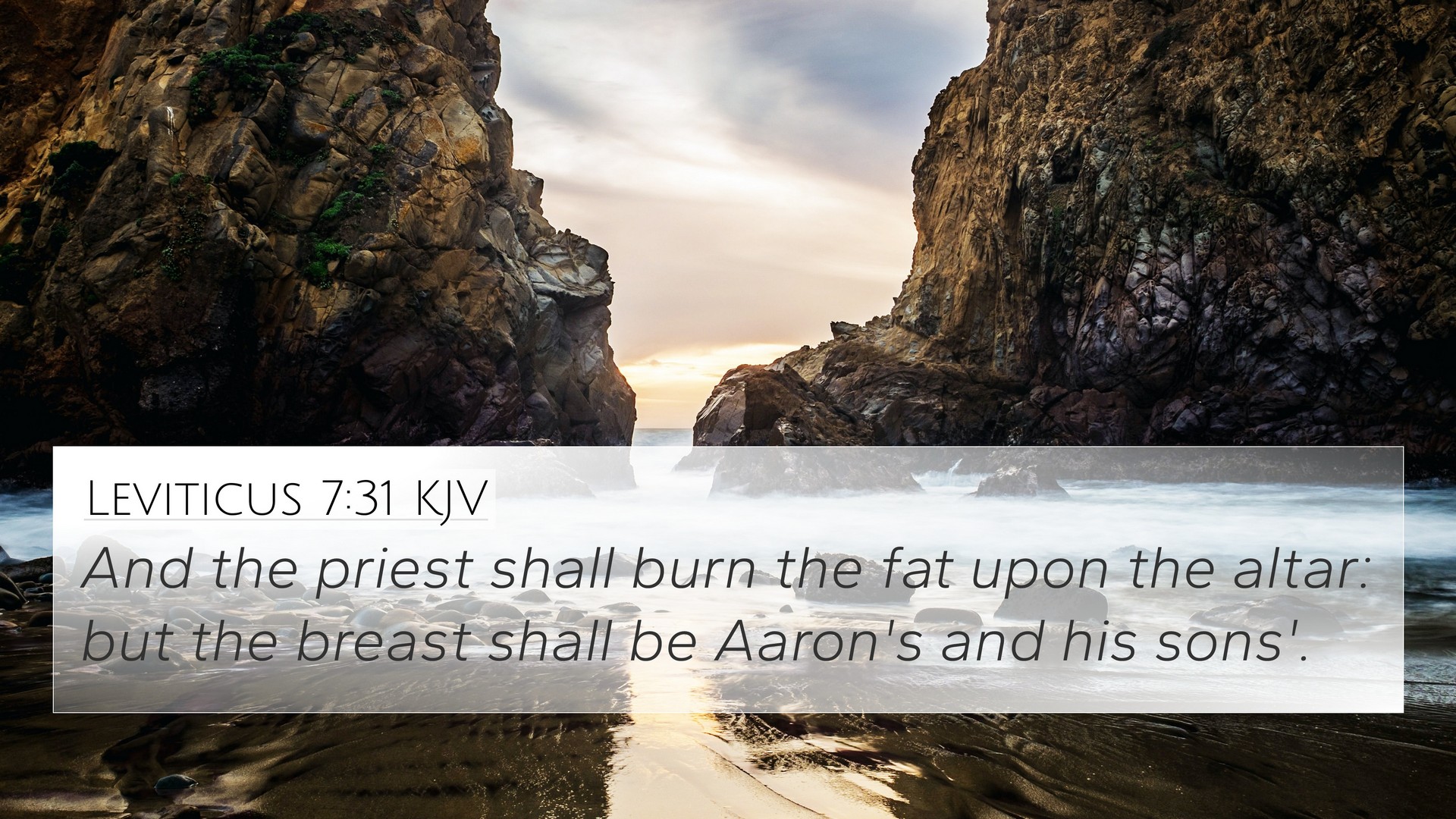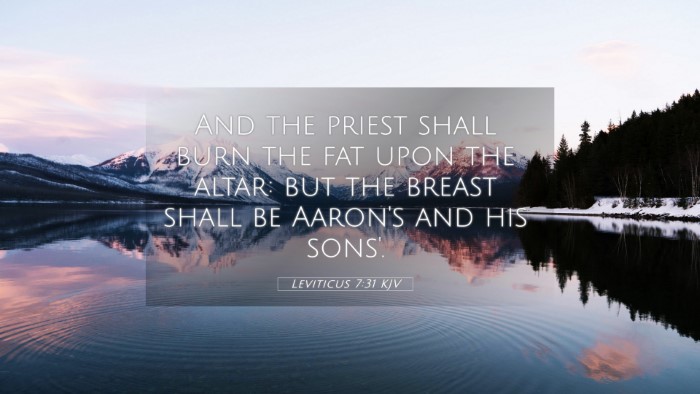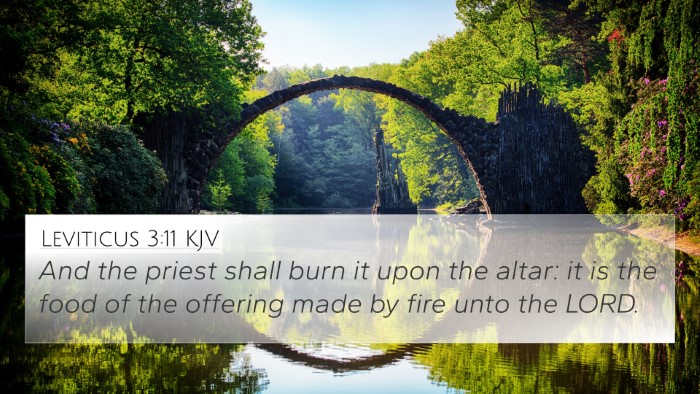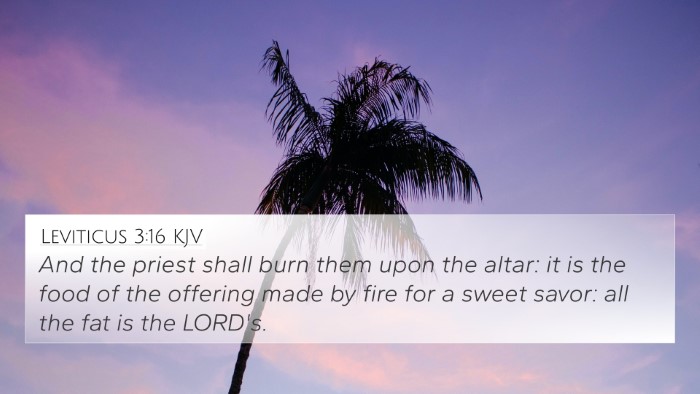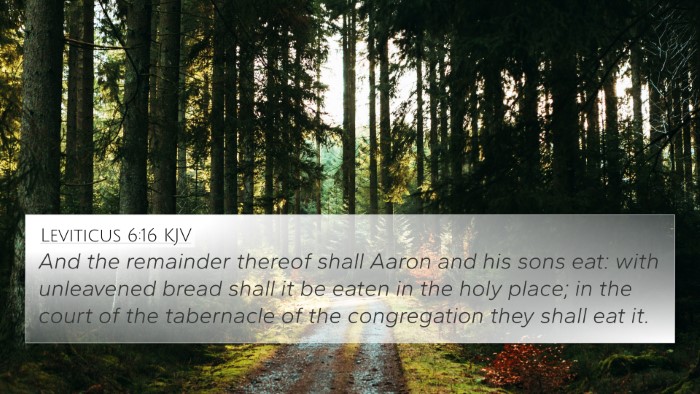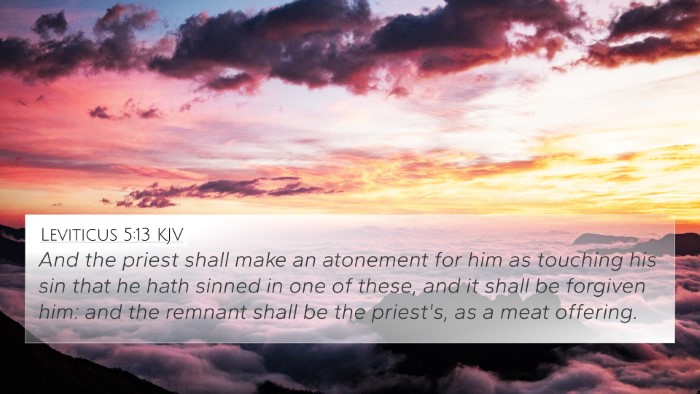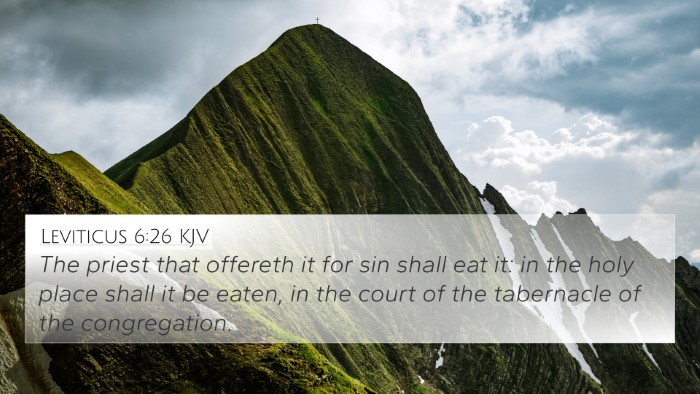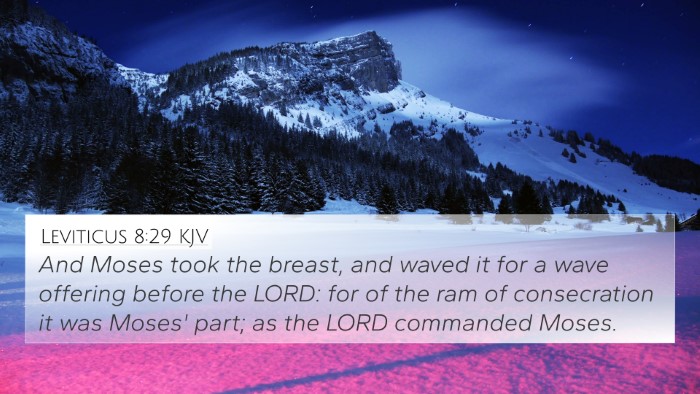Understanding Leviticus 7:31
Leviticus 7:31 states: "And the priest shall burn the fat upon the altar: but the breast shall be Aaron's and his sons'."
This verse is part of the instructions regarding the peace offerings, emphasizing the division of portions between God and the priests. Understanding this verse involves a deeper look into the significance of sacrificial practices in the Old Testament and their implications for the New Testament.
Summary of Insights
The insights from public domain commentaries provide a multifaceted view of this scripture:
-
Matthew Henry: Focuses on the sacredness of the offerings and the role of the priests in mediating between God and the people. The burning of fat symbolizes dedication to God, while the portion designated for priests represents their sustenance from the community.
-
Albert Barnes: Highlights the distinction between the offerings and the priestly rights regarding them. He explains that the breast signifies fellowship with God, and the priests are to receive their due as a reminder of their sacred responsibilities.
-
Adam Clarke: Discusses the importance of the fat in sacrificial offerings, linking it to the idea of giving God the best of what one has. He emphasizes the theological implications, stating that priests serve under a covenant that demands them to share in the communion with God and His people.
Cross-Referencing Related Verses
To understand Leviticus 7:31 more fully, we can explore several Bible verse cross-references:
- Exodus 29:27: Explains the significance of the breast and thigh as priestly portions from the peace offerings.
- Leviticus 3:3: Discusses the offering of fat in peace offerings, reinforcing its importance in sacrificial rites.
- Leviticus 10:14: Highlights the sharing of offerings among priests, illustrating their communal responsibilities.
- 1 Corinthians 9:13-14: Paul references Old Testament laws concerning priests, suggesting a continuation of priestly provisions in the New Covenant.
- Hebrews 13:10: Discusses the altar from which those who serve the tabernacle have no right to eat, indicating a deeper spiritual interpretation.
- Numbers 18:8-10: Outlines the priests' rights to certain offerings, reinforcing their divinely ordained provisions.
- Ephesians 5:2: Draws a parallel to Christ’s sacrifice as a sweet aroma to God, connecting Old Testament offerings to New Testament theology.
- Colossians 2:17: Refers to shadows of things to come, indicating Jesus as the ultimate peace offering, fulfilling the sacrificial system.
- Romans 12:1: Encourages believers to present their bodies as living sacrifices, linking to the symbolism of sacrifices made in Leviticus.
- Malachi 1:7: Warns against offering polluted sacrifices, emphasizing the need for holiness in offerings to God.
Thematic Connections
Cross-referencing these scriptures helps illustrate the thematic connections throughout the Bible:
-
Divine Provision: Leviticus 7:31 emphasizes God's provision for the priests, supported by references like Numbers 18:8-10 and 1 Corinthians 9:13-14, which speak of God’s care for His servants.
-
Offering Fat to God: The emphasis on fat in Leviticus and its significance in offerings connects to the idea of giving God our best, rooted in both Leviticus 3:3 and Malachi 1:7.
-
Role of the Priesthood: The function of priests receiving portions from sacrifices is highlighted in the New Testament, particularly in Hebrews 13:10.
-
Fulfillment in Christ: The transition from Old Testament sacrificial laws to New Testament theology is apparent in Colossians 2:17 and Ephesians 5:2, where Christ becomes the ultimate peace offering.
-
Living Sacrifices: Romans 12:1 brings the Old Testament concept of sacrifice into a new light, as believers are called to live dedicated lives to God as a form of sacrifice.
Inter-Biblical Dialogue
Analyzing Leviticus 7:31 within the context of wider scriptural cross-referencing reveals an intricate web of theological principles.
-
Pauline Epistles: Paul's writings often reflect the sacrificial system found in Leviticus, indicating a continuity in God’s covenantal relationship with humanity as seen in Romans and 1 Corinthians.
-
Connections Between Old and New Testament: Engaging with scriptures such as Hebrews and Colossians broadens our understanding of how the Old Testament foreshadows New Testament realities, showing a unified narrative of God’s redemptive plan.
-
Thematic Study: Identifying key themes, such as holiness, sacrifice, and divine provision throughout the Scriptures, can enhance personal Bible study and sermon preparation, utilizing tools for Bible cross-referencing effectively.
Conclusion
Leviticus 7:31, while rooted in the ancient context of the Israelite sacrificial system, resonates with significant New Testament truths. The cross-references and commentary insights connect themes of sacrifice, provision, and God’s holiness across the scriptures. Understanding this verse invites deeper reflections on how the sacrificial practices point towards Christ, enriching one's theological insights and personal journey in faith.
